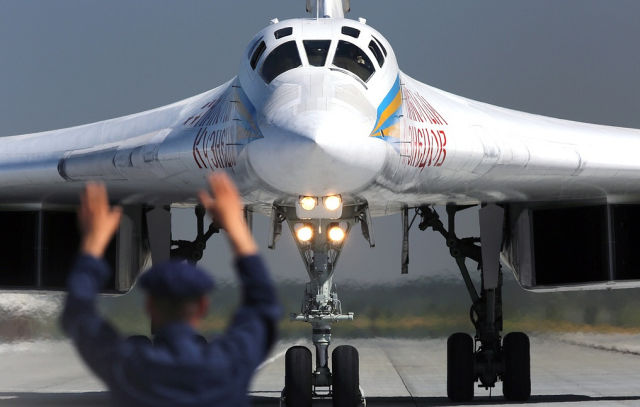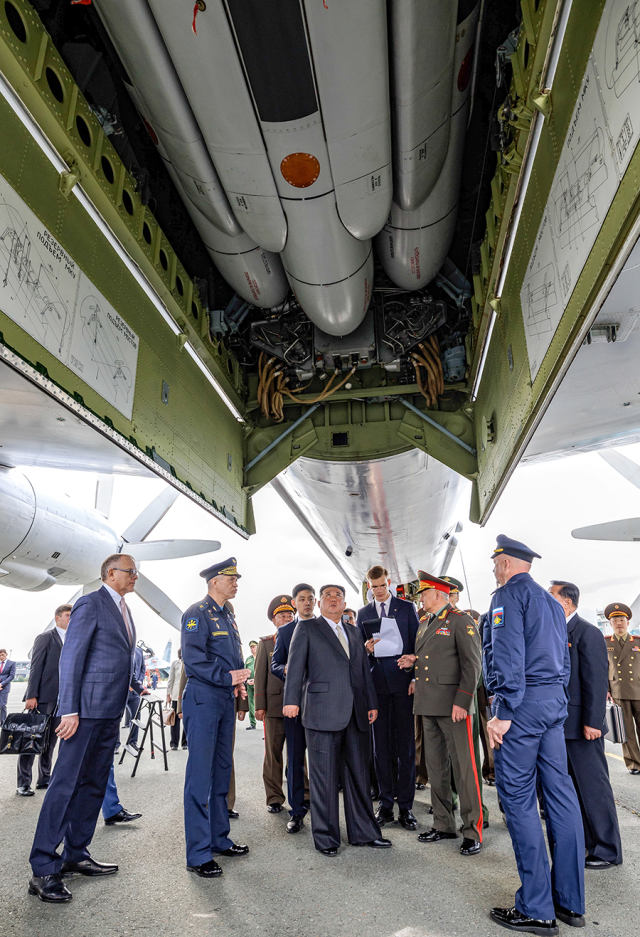Russian supersonic strategic bombers-missile carriers Tu-160 received new cruise missiles X-BD with a range of more than 6.5 thousand km. This is stated in the video, made public ...
A distinctive feature of the special military operation in Ukraine was the massive use of high-precision long-range weapons placed on ships, submarines and long-range bombers. The Russian military Department has repeatedly reported group strikes against important targets of the Armed Forces of Ukraine (AFU), objects of military industry and infrastructure.
Heavyweight Champions
The air carriers of long—range cruise missiles are strategic bombers of the Russian Aerospace Forces - supersonic jet Tu-160 and subsonic turboprop Tu-95. Both aircraft are part of the air component of the strategic nuclear forces of the Russian Federation, having the ability to launch ammunition with a special warhead. And both are unique.
The Tu-160 is the largest supersonic aircraft in the history of military aviation with a variable wing geometry, as well as having the largest maximum take-off weight among bombers. According to the Ministry of Defense of the Russian Federation, the range of its flight without refueling exceeds 14 thousand km. Currently, the release of the Strategist, suspended in the 1990s, has been resumed in a deeply modernized version of the Tu-160M.
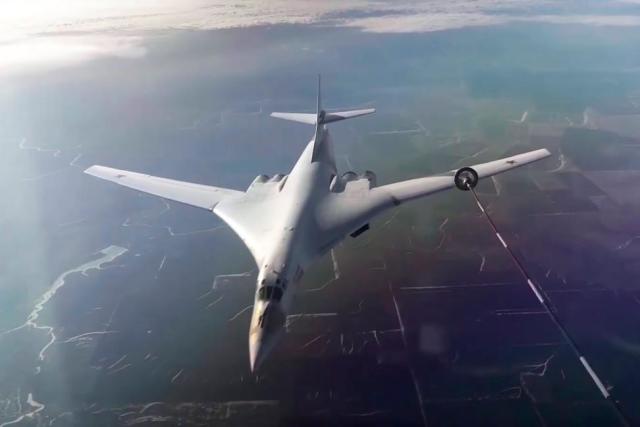 |
| Tu-160 strategic bomber. |
| Source: Ministry of Defense of the Russian Federation/ TASS |
This required the complete digitization of design documentation, the restoration of unique technologies, the launch of new production facilities and large amounts of organizational work. This year, the troops are expecting the arrival of four new missile carriers of this type. The independent American analytical publication Military Watch Magazine noted that the Tu-160M is now the only strategic bomber mass-produced.
Another heavy machine of the Tupolev Design Bureau is the Tu-95 (according to the NATO classification — Bear, "Bear"). The four-engine bomber made its first flight back in 1952, but the high modernization potential allows it to continuously improve its capabilities, adapting the aircraft to modern means of destruction. Currently, the missile carrier has been upgraded to the Tu-95MS variant. The flying "Bear" also holds several records: it is the world's fastest propeller aircraft and the only turboprop bomber. The fuel reserve allows him to fly over 10 thousand km.
"Strategic range is a range that starts from 5.5 thousand km. <...> If we consider that the strategic aircraft itself can be in the air for many, many hours - it all depends on the fatigue of the crew, on the human qualities of the crew members — and can refuel in the air, then it can fly at any range," military expert, retired Colonel Viktor Litovkin explained in an interview with TASS. He also recalled that a new strategic bomber is currently being created in Russia, which will have a subsonic flight speed.
The promising machine, called the long-range aviation Complex (PAK DA), is designed according to the "flying wing" scheme using technologies and materials that reduce its radar visibility. Its engine has already been tested, ejection seats are being tested, and an advanced onboard defense system is being developed.
Alexey Leonkov, a military expert and editor of the Arsenal of the Fatherland, noted that Russia is using long-range bombers for the first time since World War II. "Until that time, our strategic aviation acted as a deterrent factor," he told TASS. At the same time, he said, the United States has used such aircraft in many of its military operations around the world. "This is, for example, the use of B-52 bombers in the wars against Vietnam, in all the wars in the Persian Gulf against Iraq, against Libya, Serbia. [The inconspicuous bomber] B-2, another component of US strategic aviation, was actively used for strikes in Iraq and Afghanistan," Leonkov recalled.
Intercontinental drone
The main striking force of strategic missile carriers, as the name implies, is missile weapons. The Tu-160M is capable of carrying 12 long-range cruise missiles in two drum launchers inside the fuselage, and its maximum payload mass is 45 tons. The Tu-95MS bomb bay can hold up to six rounds of ammunition.
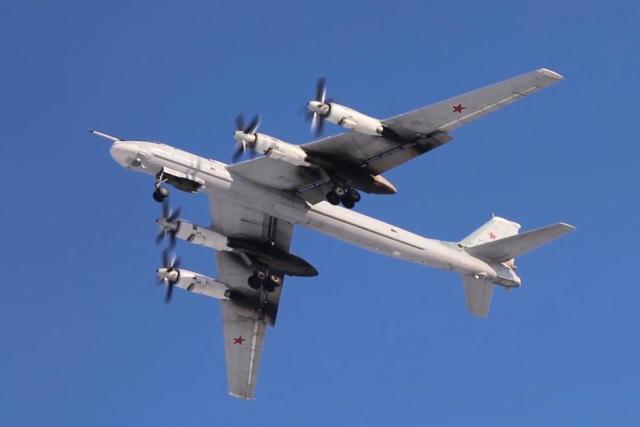 |
| Strategic missile carrier Tu-95MS. |
| Source: Ministry of Defense of the Russian Federation/ TASS |
Technically, the long—range air—to-surface cruise missile is a single-use jet drone of an airplane type. The lifting force created by the wing of a small area allows it to stay in the air, and a small-sized turbojet engine provides traction. The munition has an onboard navigation system, and it flies according to the flight task entered before launch.
The first mass-produced cruise missile used, including from an aircraft carrier, was the German V-1 during World War II. The projectile with a warhead mass of up to a ton was equipped with a pulsating jet engine. Under autopilot control, he could fly a distance of several hundred kilometers, and then dive into the target area. This was enough for the shelling of the territory of Great Britain. However, due to the low accuracy, the German missile could not target objects and was used rather to intimidate the inhabitants of the British Isles - so the Nazis tried to break their will to resist. Due to low reliability and low speed, a large percentage of the V-1 fell into the sea, was hit by anti-aircraft artillery and fighter aircraft.
Russian strategic bombers can use several types of cruise missiles. The newest of them is the X—DB, which was demonstrated to the leader of the DPRK, Kim Jong-un, who visited Russia from September 12 to 17, during his visit to the airfield Knevichi in Primorye. The appearance of the novelty was not disclosed, but the commander of the long-range aviation of the Russian Aerospace Forces, Lieutenant General Sergei Kobylash, said that its range exceeds 6.5 thousand km.
"This range is designed to ensure that the aircraft does not enter the area of operation of the enemy's air defense system. So that he could hit the target without entering this zone," Litovkin said, noting that Russian "strategists" with missiles of this class reached warehouses, storage bases for military equipment and fuel and lubricants even in the rear areas of Ukraine.
Long-range cruise missiles follow targets at subsonic speed. According to Leonkov, this decision is due to the fact that the range of ammunition use is at the forefront.
Another strategic cruise missile, the X-101, has proven its effectiveness in combat conditions, destroying objects of international terrorist groups during the Syrian operation of the Russian Armed Forces. According to the Ministry of Defense of the Russian Federation, the high-precision munition is designed with the use of stealth technologies, thanks to which the missile is "practically invisible to any air defense means." The flight range of the X-101 is 4.5 thousand km, and the accuracy of hitting the target is several meters.
Viktor Murakhovsky, editor-in-chief of the Arsenal of the Fatherland magazine, told TASS that the missile uses a combined guidance system, including inertial and optoelectronic. "It (the missile) can receive complex information both along the route and by the coordinates of the target. Unlike the previous generation of missiles, there is a possibility of fundamentally re-targeting the missile to another object. The control points of the route are programmed, as well as the targets that the missile can hit, and then it is possible to change the target during the combat mission," he explained, adding that the onboard systems are made of Russian components. According to the expert, in previous generations of such missiles, products of the former USSR countries were used.
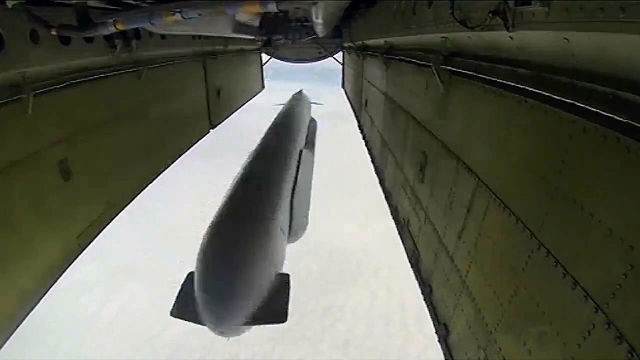 |
| The Tu-95 strategic bomber of the Russian Military Space Forces launches an X-555 cruise missile at an ISIS facility in Syria. |
| Source: Ministry of Defense of the Russian Federation |
Also, the Russian strategic aviation uses a long—range air-to-surface cruise missile X-555. This is a modification of the X-55 missile, in which the nuclear warhead is replaced with a conventional one in various versions: high-explosive fragmentation, penetrating to destroy fortified structures, as well as cluster. According to open sources, the rocket's onboard equipment has been upgraded, and it can navigate not only with the help of an inertial system and navigation satellite signals, but also by the image of the terrain. All this allows you to hit targets with an accuracy of 5-10 m. The ammunition was also used by the Russian Aerospace Forces during the operation in Syria. The X-555 can be equipped with additional conformal (closely adjacent to the fuselage) fuel tanks, which allows it to hit targets at a distance of 2.5 thousand km.
At the end of the 1940s, the Soviet Union began developing the Comet complex with aviation cruise missiles or, as they were then called, KS-1 projectile planes. It was intended to give an asymmetric response to the aggressive course of the United States and NATO countries, which by that time possessed a nuclear arsenal and dozens of aircraft carriers carrying nuclear weapons. The complex, which entered service in 1953, consisted of a long-range four-engined Tu-4 bomber, under the wing of which two KS-1s were suspended. Rockets with a jet engine, similar to smaller copies of the MiG-15 fighter, were capable of hitting sea and land targets at a distance of up to 150 km as part of the complex.
"Russia is not going to run out of missiles"
Western sanctions designed to complicate the work of the Russian military-industrial complex (MIC), as well as the widespread use of high-precision missile weapons in the course of its OWN gave foreign officials and military experts a reason to declare the devastation of Russian arsenals. However, the intensity of strikes by the Russian Armed Forces is not decreasing.
Since the beginning of the special operation, the enterprises of the domestic defense industry have multiplied the production of military equipment and ammunition. The Tactical Missile Armament Corporation (KTRV), which produces long-range aviation missiles, is fulfilling the order of Russian Defense Minister Sergei Shoigu to double production volumes. In addition, gunsmiths switched to serial production of the latest models of weapons previously produced in experimental batches.
"The continuation of Russian strikes in 2023 has clearly shown that it is unrealistic to expect that Russia will ever "run out" of missiles. Despite the sanctions and export controls, it seems likely that Russia will be able to continue to produce or otherwise receive long—range weapons," says an article with the eloquent title "Russia is not going to run out of missiles," published by the US Center for Strategic and International Studies CSIS in June.
Victor Bodrov
